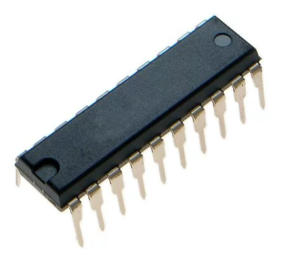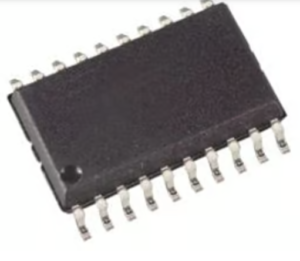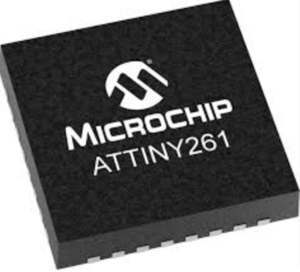 Break IC ATTINY261 Code
Break IC ATTINY261 Code
Breaking IC ATTINY261 code requires specialized skills to crack or decrypt the secured microcontroller’s encrypted firmware. This protective microcomputer is designed to safeguard its flash memory and EEPROM, storing programs and software in binary or heximal formats. Reverse engineering techniques are often employed to bypass security mechanisms, allowing access to the locked source code for recovery or restoration purposes.

phá mã IC ATTINY261 đòi hỏi các kỹ năng chuyên biệt để bẻ khóa hoặc giải mã chương trình cơ sở được mã hóa của vi điều khiển được bảo mật. Máy vi tính bảo vệ này được thiết kế để bảo vệ bộ nhớ flash và EEPROM của nó, lưu trữ các chương trình và phần mềm ở định dạng nhị phân hoặc thập lục phân. Các kỹ thuật kỹ thuật đảo ngược thường được sử dụng để bỏ qua các cơ chế bảo mật, cho phép truy cập vào mã nguồn bị khóa cho mục đích phục hồi hoặc khôi phục
Professionals may use advanced tools to analyze the encrypted firmware, enabling the cloning or copying of the program stored in the microprocessor. This process demands a deep understanding of the ATTINY261’s architecture, as it is a highly secured MCU with features that protect its code from unauthorized access. Successfully breaking the IC ATTINY261 code enables the recovery of critical data or replication of the firmware for diagnostics or system redundancy. However, it is essential to ensure such actions comply with legal and ethical guidelines.

Break IC ATTINY261 Code
We can Break IC ATTINY261 Code, please view the IC ATTINY261 features for your reference:
High Performance, Low Power AVR® 8-Bit Microcontroller
Advanced RISC Architecture
– 123 Powerful Instructions – Most Single Clock Cycle Execution
– 32 x 8 General Purpose Working Registers
– Fully Static Operation when Break IC
Non-volatile Program and Data Memories
– 2/4/8K Byte of In-System Programmable Program Memory Flash
(ATtiny261/461/861)
Endurance: 10,000 Write/Erase Cycles
– 128/256/512 Bytes In-System Programmable EEPROM (ATtiny261)
Endurance: 100,000 Write/Erase Cycles when Reverse Engineering Microcontroller ATTINY4313 Code
– 128/256/512 Bytes Internal SRAM (ATtiny261/461/861)
– Programming Lock for Self-Programming Flash Program and EEPROM Data Security
Peripheral Features

złamanie kodu IC ATTINY261 wymaga specjalistycznych umiejętności, aby złamać lub odszyfrować zaszyfrowane oprogramowanie układowe zabezpieczonego mikrokontrolera. Ten ochronny mikrokomputer jest zaprojektowany do ochrony pamięci flash i EEPROM, przechowując programy i oprogramowanie w formatach binarnych lub heksametalogowych. Techniki inżynierii wstecznej są często stosowane w celu ominięcia mechanizmów bezpieczeństwa, umożliwiając dostęp do zablokowanego kodu źródłowego w celu odzyskania lub przywrócenia
– 8/16-bit Timer/Counter with Prescaler and Two PWM Channels
– 8/10-bit High Speed Timer/Counter with Separate Prescaler after Break IC ATTINY2313 Code
3 High Frequency PWM Outputs with Separate Output Compare Registers
Programmable Dead Time Generator
– Universal Serial Interface with Start Condition Detector
– 10-bit ADC
11 Single Ended Channels
16 Differential ADC Channel Pairs
15 Differential ADC Channel Pairs with Programmable Gain (1x, 8x, 20x, 32x)
– Programmable Watchdog Timer with Separate On-chip Oscillator if Recover MCU ATTINY45V Program
– On-chip Analog Comparator
Special Microcontroller Features
– debugWIRE On-chip Debug System
– In-System Programmable via SPI Port
– External and Internal Interrupt Sources
– Low Power Idle, ADC Noise Reduction, and Power-down Modes

IC ATTINY261 कोड को तोड़ने के लिए सुरक्षित माइक्रोकंट्रोलर के एन्क्रिप्टेड फर्मवेयर को क्रैक या डिक्रिप्ट करने के लिए विशेष कौशल की आवश्यकता होती है। यह सुरक्षात्मक माइक्रोकंप्यूटर अपनी फ्लैश मेमोरी और EEPROM की सुरक्षा के लिए डिज़ाइन किया गया है, जो प्रोग्राम और सॉफ़्टवेयर को बाइनरी या हेक्सिमल फ़ॉर्मेट में संग्रहीत करता है। रिवर्स इंजीनियरिंग तकनीकों को अक्सर सुरक्षा तंत्र को बायपास करने के लिए नियोजित किया जाता है, जिससे रिकवरी या बहाली के उद्देश्यों के लिए लॉक किए गए स्रोत कोड तक पहुँच की अनुमति मिलती है
– Enhanced Power-on Reset Circuit
– Programmable Brown-out Detection Circuit
– Internal Calibrated Oscillator
I/O and Packages
– 16 Programmable I/O Lines after Break IC
– 20-pin PDIP, 20-pin SOIC and 32-pad MLF
Operating Voltage:
– 1.8 – 5.5V for ATtiny261
– 2.7 – 5.5V for ATtiny261
Speed Grade:
– ATtiny261V/461V/861V: 0 – 4 MHz @ 1.8 – 5.5V, 0 – 10 MHz @ 2.7 – 5.5V when Break IC
– ATtiny261/461/861: 0 – 10 MHz @ 2.7 – 5.5V, 0 – 20 MHz @ 4.5 – 5.5V
– Active Mode: 1 MHz, 1.8V: 380ìA
– Power-down Mode: 0.1ìA at 1.8V
Typical values contained in this data sheet are based on simulations and characterization of other AVR microcontrollers manufactured on the same process technology. Min and Max values will be available after the device is characterized.
The ATtiny261 is a low-power CMOS 8-bit microcontroller based on the AVR enhanced RISC architecture which can facilitate the process of Microcontroller unlocking. By executing powerful instructions in a single clock cycle, the ATtiny261 achieves throughputs approaching 1 MIPS per MHz allowing the system designer to optimize power consumption versus processing speed.